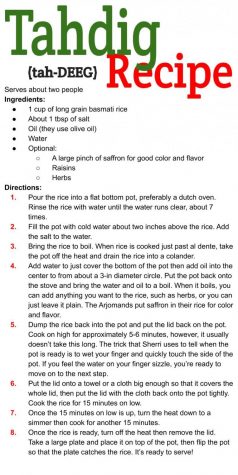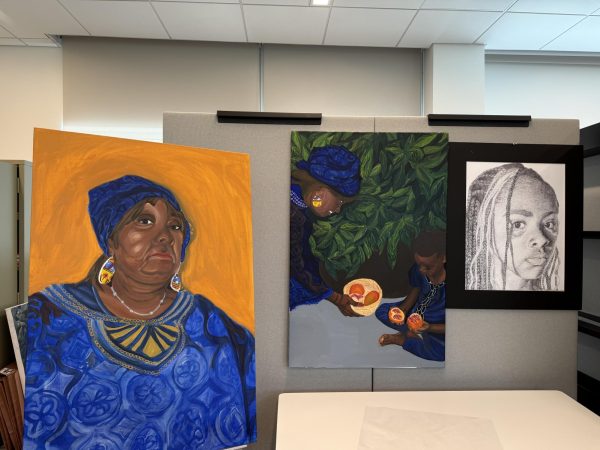Cooking and Culture: The Arjomands’ Persian cuisine

When countries are in conflict, it can be easy to distance one’s mind from the other side and adopt a one-dimensional view. This is especially relevant now as the conflict between the United States and Iran dominates news media. What can be lost in this polarization is an appreciation and respect for Iranian culture.
Senior Roya Arjomand’s parents escaped from Iran during the Iranian Revolution and both ended up in the United States. Sherry Arjomand, Roya’s mother, was woken up in the middle of the night by her mother and was put on one of the last flights out of the country at the time. “We waited for everything to mellow out but it never happened,” said Mrs. Arjomand.
One of the many aspects of Iran that Mrs. Arjomand misses is the freshness of the produce. ”When you have fruits and vegetables that were grown close to you, it’s so different,” she said. Mrs. Arjomand explained how the difference between American one-stop shopping supermarkets full of processed foods was a stark contrast to Iran where “you had the meat market, you had the stands for the herbs, everybody had a fresh bread bakery down the street from them.”
When she first came to the United States, Mrs. Arjomand admits that it was hard to retain aspects of Iranian customs and culture but as time went on, Persian restaurants and stores opened and it became easier. “Back then you just fudged it to get close to what we used to have,” she said. Cooking, however, was one of the ways that she and her family connected with their culture.
Legumes and herbs are a large part of Iranian cooking. Staple foods also include rice and meat, and a stew over rice is an immensely popular dish. ”It took a long time to cook a meal,” said Mrs. Arjomand. “Persian cooking is not about technique…it is very time consuming and takes a lot of effort.”

One of the Arjomand’s favorite recipes is Tahdig: a traditional Persian dish. It is commonly known as “crusted” or “burnt” rice because it is made by cooking the rice that touches the bottom of the pot until it is crispy. Tahdig is commonly served with Kabobs and stews, but it can be a good side with any meat dish.









